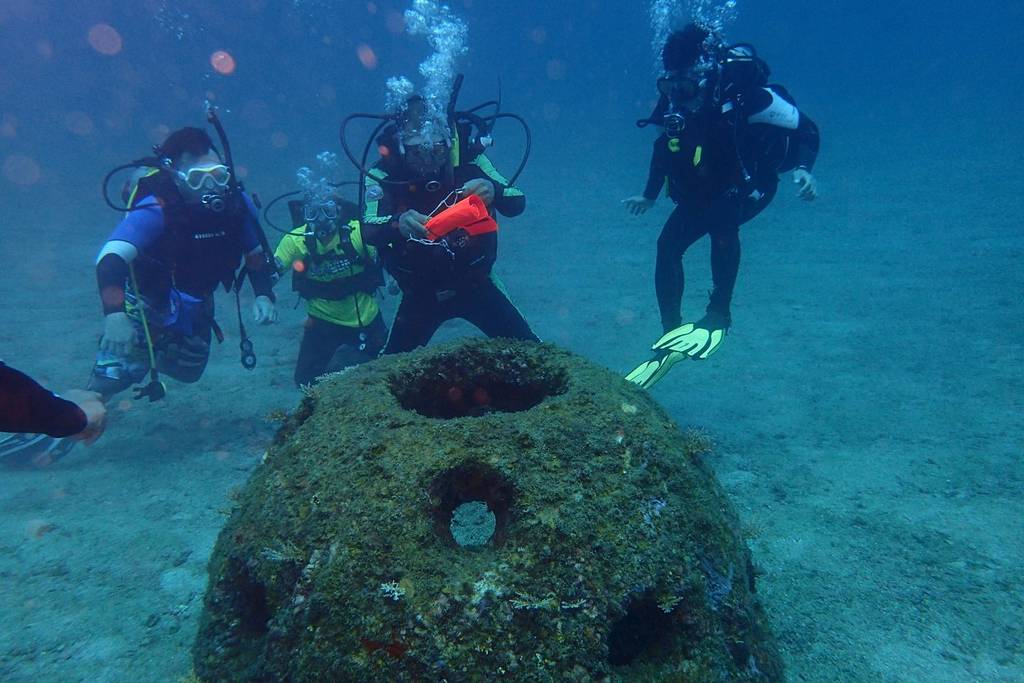Sarawak, has once again positioned itself on the global stage through its innovative Reef Ball Project. This initiative, a testament to Sarawak’s commitment to marine conservation, has not only enhanced the state’s fisheries but also contributed significantly to global marine biodiversity preservation efforts.
The Reef Ball Project, initiated in response to the National Policy on Biological Diversity (2022-2030), aims to protect at least 10% of Sarawak’s coastal and marine areas. This project involves the deployment of artificial reef structures known as reef balls along Sarawak’s coastline. These structures, made from a special marine-friendly concrete, are designed to mimic natural reef systems, providing habitats for a wide range of marine species.
Each reef ball, with a surface area of approximately 14 square meters, serves as a settlement space for coral larvae, algae, sponges, and a variety of marine organisms. This initiative has resulted in the creation of around 329,000 rough surfaces in the state waters, significantly boosting the state’s marine biodiversity. It is estimated that each reef ball can increase fisheries resources by 100kg to 400kg annually, thereby supporting the livelihoods of local communities and contributing to Sarawak’s blue economy.

The project’s success has not gone unnoticed. In 2023, the Sarawak government received international recognition from the Reef Ball Foundation of the USA for creating the world’s longest artificial reef barrier. This 746km-long barrier, stretching from Tanjung Datu to Lawas, stands as a monumental achievement in marine conservation, highlighting Sarawak’s role as a global leader in this field.
Beyond its ecological impact, the Reef Ball Project also has significant socioeconomic implications. By enhancing fisheries resources, it supports the livelihoods of local fishermen, many of whom rely on the ocean for their income. Furthermore, the project contributes to the development of ecotourism in the region, attracting divers and marine enthusiasts from around the world to explore the artificial reefs and the vibrant marine life they support.
The Sarawak government’s commitment to marine conservation is further demonstrated by its plans to gazette a 380,000-hectare area known as the Sarawak Marine Corridor National Park. This, along with the proposed Bako-Buntal National Park, Kuala Lawas National Park, and the Extension Talang-Satang National Park, will ensure that these areas remain protected for future generations.
Assemblyman Mohd Chee Kadir, a vocal advocate for the project, emphasized the long-term benefits of this initiative during the Sarawak People’s Reef Ball Project Phase II Stakeholder Engagement Session in Kabong. He highlighted how the reef balls provide essential habitats for marine life, helping to restore and maintain the ecological balance in Sarawak’s waters. He also noted that this effort aligns with global conservation goals, positioning Sarawak as a key player in the fight to preserve marine biodiversity.

In conclusion, the Reef Ball Project is more than just an environmental initiative it is a symbol of Sarawak’s dedication to sustainable development. By investing in marine conservation, the state not only protects its natural heritage but also secures a brigther, more sustainable future for its people. The project’s international recognition underscores Sarawak’s leadership in marine biodiversity conservation, serving as a model for other regions to follow.
Reference
Awang, D., & Pit, I. (n.d.). Study On Reef ball At Batu Penyu nearby Talang Talang Island. Retrieved August 22, 2024, from https://www.reefball.org/album/malaysia/eastmalaysia/sarawak/SarawakReefBallWorkingGroupTurtleProtectionProject/scientificpapers/reefball.pdf
Jane Moh on. (2024, August 11). Sarawak reef ball project signifies commitment to maintaining marine eco-balance. https://www.theborneopost.com/2024/08/11/sarawak-reef-ball-project-signifies-commitment-to-maintaining-marine-eco-balance/
Philip Wong on . (2024, August 5). Reef ball project puts Sarawak on global marine biodiversity map. https://www.theborneopost.com/2024/08/05/reef-ball-project-puts-sarawak-on-global-marine-biodiversity-map/





